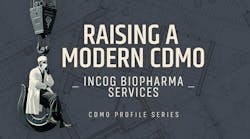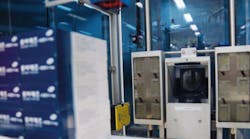Advocates of increased funding for military research have always argued that spinoff technologies and applications more than justify the investment. They would seem to be vindicated by Ampac Fine Chemicals (Sacramento, Calif.), a contract manufacturing company that makes active pharmaceutical ingredients and intermediates, including paclitaxel, the active ingredient for the cancer treatment Taxol, which is derived from the Pacific yew tree, under contract with Bioxel.
Originally Aerojet Fine chemicals, Ampac was carved out of a large aerospace defense company that developed missile and rocket propellants in work dating back to the 1940s and 1950s, explains Paul Kane, CFO and director of information systems. In the 1990s, Aerojet began to move into pharmaceutical manufacturing, in part to commercialize investments at the site.
Eight years ago, the company became an independent business, although it still retained elements of the old culture, says Kane. Around the time that the company was acquired by American Pacific Corp. in 2005, its managers realized that the company’s IT platform had failed to keep up with growing demand for contract services in four main niches: high-containment, simulated moving beds and chiral chromatography, energetic chemistry and continuous processing. Ampac needed to overhaul its IT system.
“The business of process manufacturing is quite different from that of discrete manufacturing, and the company’s old IT infrastructure didn’t always work that well with the new processes,” Kane explains. “For instance, when I joined the company around 2001, we still did accounting and inventory management in Excel,” he continues. “Our business was growing and we needed a new platform that would work in an FDA-regulated environment. What we had worked well enough, but looking out 5-10 years, we anticipated some weaknesses.”
Figure 1. A technician works in Ampac’s QC analytical lab for production monitoring
and final product release.
Ampac evaluated over 20 platforms, eventually winnowing that number down to three. Ultimately, the company installed Oracle’s E-Business Suite, which is used by parent company APC as well, including its manufacturing, procurement and financial modules. Va lidated in three months Implementation took six months to complete, led by a team of 15-20 from Ampac and Business & Decision (Paris, France), a systems integrator.
“B&D has a lot of experience in GAMP, and we found them very helpful in formulating a strategy for validation,” says Kane. The validation effort took three months, with individuals devoting over 50% of their time to the project.” B&D also hosts the solution off site, and has set up a strong disaster recovery system. Deployment of the new IT platform was really only the latest part in a major infrastructure buildup that began in the early 2000s in anticipation of growth, CFO Kane says.
Today, there are 61 buildings at the Sacramento site. Two years ago, the company installed what Kane describes as the world’s largest simulated moving bed (SMB) chromatography installation, involving five columns of 1,000 mm in diameter, supplied by Groupe Novasep. “The only other facility in the world that features this technology is in Europe,” says Jeff Robinson, head of quality operations for Ampac.
Figure 2. Product is batched after drying and
released on a batch-by-batch basis.
“We also have several high-containment units, from kilo lab and R&D-scale to full manufacturing-scale, and we believe we’re the only ones doing SMB in a highcontainment environment,” Kane says.
Five years ago, Ampac customized a facility for Bioxel’s SMB equipment, involving 8 x 75mm diameter columns in a highcontainment environment. Ampac’s history in propellant manufacturing dictated that the company develop experience in containment. Now, the company is benefiting from the drug industry’s move to more targeted therapies involving highly active ingredients.
Ampac also has a history of working with toxic compounds, Kane says, and has been manufacturing highly potent compounds since 1972. Today, the company produces 9-10 commercial cytotoxic compounds approaching a combined production of 2,000 kg per year. Continuous manufacturing is another focus.
Not only is SMB chromatography a continuous process, but roughly 20% of Ampac’s sales are from products that are manufactured continuously. “Historically, a core group of individuals has developed expertise in continuous processing since the 1980s,” says Robinson. “Space shuttle rocket fuel production was the original basis for this effort, at a facility that made 1000 lbs. of materials per hour on pilot-scale unit.” Materials are produced with a continuous component in the manufacturing process but are still released on a batch basis.
“Rather than base batch definition on a discrete quantity, we base it on a discrete time period,” explains Kane. “Then, at some point, usually during the final drying, a quantity of material is defined as a batch, so the material is released on a batch-by- batch basis to simplify regulatory filings.”
Process analytical technologies (PAT) are being applied at the facility, says Robinson, since they lend themselves to continuous processing, and a knowledge-based system is being used to control plant operations. “We’ve been doing multivariate analysis for some time, and applying bits and pieces of PAT,” says Robinson. “The hard thing is linking everything together.”
At this point, Kane remarks, the facility is collecting and tracking real-time process data, although it’s not yet doing that automatically. “The goal is to be able to connect directly to an MES system, something that the Oracle technology will make possible,” he says. Ampac also installed technology to allow customers direct access and the ability to view manufacturing operations during Phase II.






